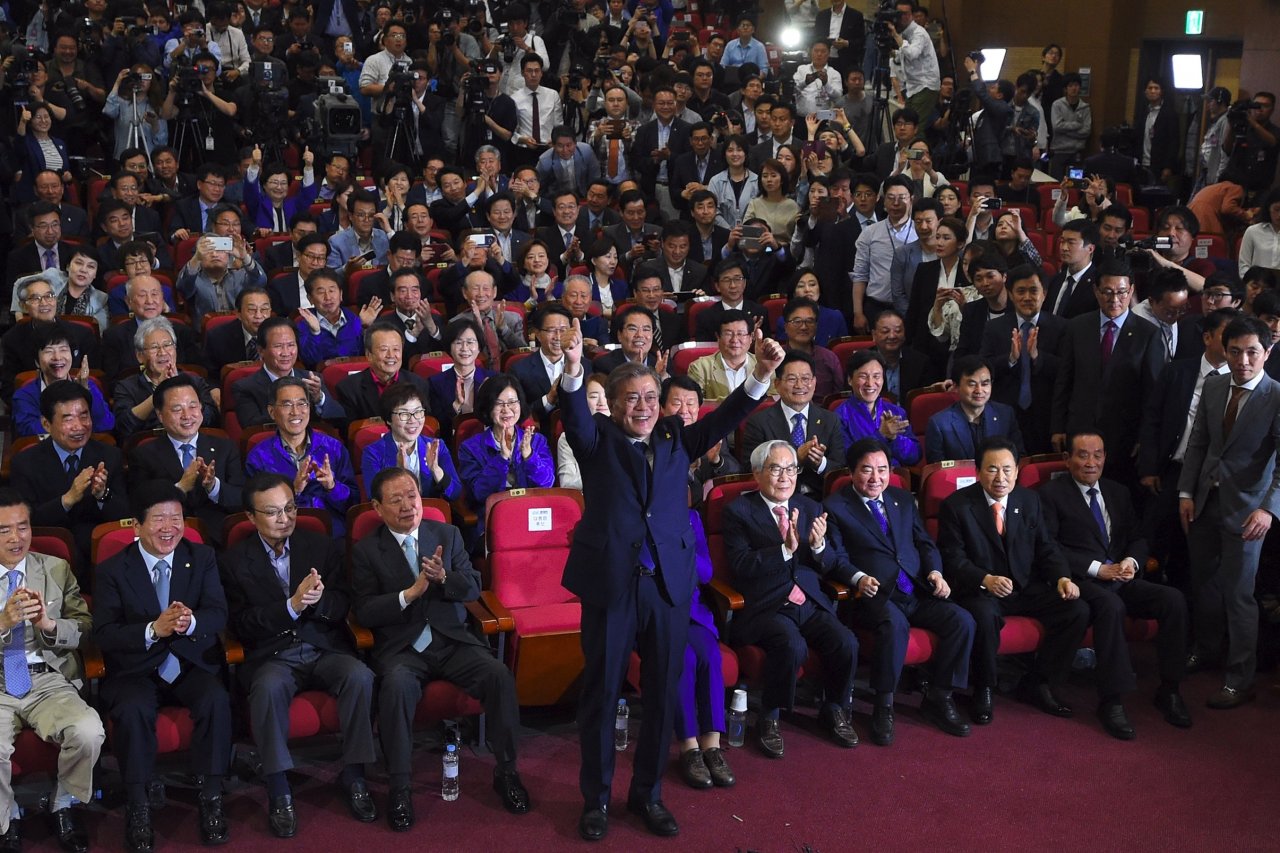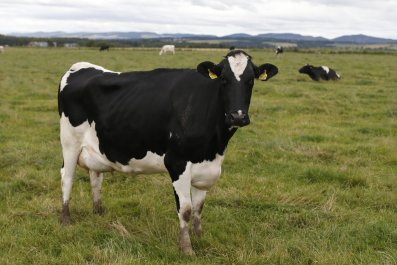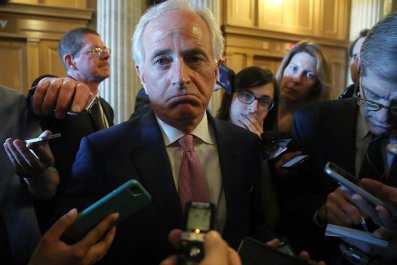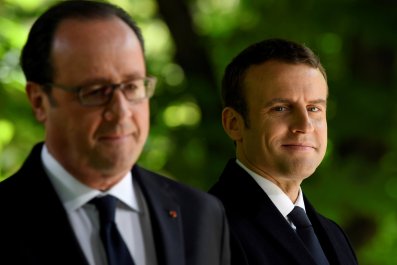Donald Trump's most urgent foreign policy problem—figuring out a way to halt North Korea's nuclear weapons and long-range missile programs—just got more complicated. On May 9, South Korea elected Moon Jae-in, a left-leaning human rights lawyer and advocate of political engagement with Pyongyang, as its new president. He replaces impeached conservative President Park Geun-hye, who is under indictment on corruption allegations.
The first and foremost problem for Trump: He and his team have been leaning on everyone in the region—South Korea, Japan, China and Russia—to put more economic pressure on Kim Jong Un's regime in Pyongyang. He's been urging them to more rigorously enforce the U.N. sanctions, as well as possibly seeking additional economic penalties—as a way of getting the North to discuss a freeze of its weapons program.
But Moon is a man of the left, and in South Korea political terms, that means he's all for an open dialogue with Pyongyang, as well as more economic engagement. Both were hallmarks of the left's "Sunshine policy," which promoted, for example, a vast industrial park at Kaesong, just across the demilitarized zone that divides the peninsula, where more than 100 small and medium-sized South Korean manufacturing companies employed thousands of North Koreans to make their goods. Kaesong, which opened when Moon was chief of staff to then-President Roh Moo-hyun, funneled millions of dollars into the North. But Park closed it in early 2016 to protest one of Pyongyang's nuclear tests.
During the recent presidential campaign, Moon said he was in favor of reopening the site—which is about the last thing the Trump administration would want. But as the election wore on, Moon hedged a bit. He insisted he wouldn't reopen the site unconditionally and stressed that the U.S. and South Korea should coordinate their policies before they make any new decisions about Pyongyang.
The American president—at China's behest, say Trump administration officials, who weren't authorized to speak on the record—has toned down some of his rhetoric about "all options" being on the table when it comes to the North Korean regime. He has said he would be "honored" to meet Kim, if the conditions existed for such a summit. Secretary of State Rex Tillerson told the United Nations that the U.S. wanted to bring Pyongyang to "its senses, not to its knees"—a signal that the White House does not seek regime change in the North. Tillerson ruled out, however, negotiations without preconditions. The administration is now thinking through what would be required of Pyongyang to get Washington to the bargaining table.
Still, the Trump administration's softened rhetoric will likely please the South Korean leader, and an early meeting between the two presidents should not be ruled out, officials in Washington say. In fact, despite some of his dovish campaign rhetoric—at one point during the campaign, Moon said he would visit Pyongyang before visiting Washington if it would help resolve the North Korean situation—the Trump administration does not seem overly concerned about the possibility that its key ally in Korea might no longer be in lockstep with Washington when it comes to the North.
Part of the reason no one is panicking, an administration official says, is that the White House does not expect Moon to be dogmatic about "Sunshine policy 2.0." Moon, they say, acknowledges that the North has progressed significantly in its weapons programs and that the trend line is worrisome. And even though as a candidate Moon expressed reservations about the missile defense system the U.S. has given to Seoul—the so-called Terminal High Altitude Area Defense, or THAAD—his camp has signaled that if the Americans got it up and running before the election, the new government would leave it in place. The U.S. did just that.
In its relatively short history as a democracy, South Korea has now lurched several times between hawkish and dovish stances on North Korea. Seoul's allies should be used to it by now. Trump, of course, has famously complimented himself on his own "flexibility," so perhaps Moon might push him on the inclination to sit down directly with Kim. "Too soon to tell" is all an administration official would say in response to that notion.
Domestic politics will force the new president in Seoul to tread carefully when it comes to Washington. With tensions increasing with the North, Trump hurt himself in South Korea by complaining (again) about the THAAD deployment, arguing that South Korea should pay for it. (H.R. McMaster, the president's national security adviser, quickly reassured Seoul that no payment was necessary.) Trump's incessant whining about the U.S.-Seoul free trade agreement also irritates ordinary Koreans. As a candidate, Moon said his country needs to learn how to say no to Washington, and he may do just that if and when Trump asks him to renegotiate the deal.
But the most pressing issue for Washington and Seoul is how they'll handle the pudgy young leader in Pyongyang and his growing arsenal. Trump and his team want to tighten the economic noose—"leaning into" the Chinese, in particular to do so, as Tillerson put it—while Moon campaigned on increasing economic engagement.
It can't be both.















